A Tale of Two Jackets
“To be honest, the shopkeeper’s story was as interesting to me as his wares. Between jackets, I inquired as to his origins. He was an ethnic Turk from Yugoslavia, most specifically the Kosovo Province of Serbia. My wife had studied in Kosovo for a semester and the two of them exchanged some nostalgic memories of life in the SFRJ (the Serbian acronym for Socialist Federal Republic of Yugoslavia). He spoke a very functional Serbian and said that he emigrated to Turkey ‘after finishing with the JNA (Yugoslav Peoples’ Army).’ I think he even had a tattoo of the army’s acronym in Cyrillic lettering: ‘ЈНА.’ The borders between us all collapsed as these two former Yugoslavians, and one token Greek, sat down to tea.”—Alexander Billinis
Roaming East Roman
By Alexander Billinis
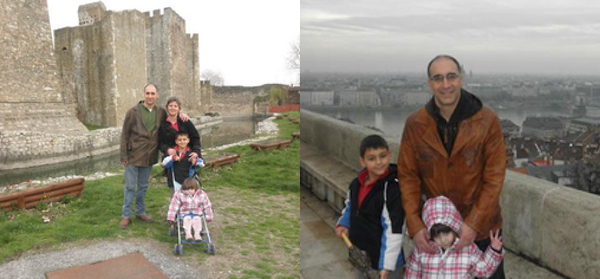
CLEMSON South Carolina—(Weekly Hubris)—February 2018—My beloved leather jacket, though retired now due to over-wear and an unfortunate encounter with uncovered rebar in Serbia, has a great story behind it.
It begins in the autumn of 2007, near the end of my two-year sojourn in Greece. My wife, son, and I were living in Athens, but finding any excuse to travel outside the capital. A colleague at my bank’s London office told me about a trade conference going on in Istanbul, and suggested that I angle for permission to go. Though I had exhausted most of my political capital, both with my boss in Athens as well as the powers that be in London, I was all too willing to skate out onto even thinner ice with Management for the opportunity to visit Turkey . . . on the bank’s dime.
My wife was not going to miss the chance to go, either. One of the few consolations of my work in pre-economic-collapse Greece was my bank’s indulgent travel policy. Vilma and I had gone, both with and without our son, to London and Amsterdam, and now I could hardly wait to go to “The City” (among the names Greeks use for Istanbul, as well as the preferred Constantinople) with my life companion. In this case, we left John in the care of my in-laws in Serbia, and Vilma met me in Istanbul.
Normally, on a business trip, cultural and personal pursuits are secondary to the official business at hand. This trip, however, fit the textbook definition of junket; our first evening before the conference involved rooftop drinks at our posh Beyoğlu hotel, where a simple cocktail ran a cool $20. Naturally, we took in the sites of Istanbul—our Constantinople—including a tour by taxi along the Bosphorus, which took in the yalis (villas with water views) of the first families and nouveau riche, suburbanized (former) Greek fishing villages, and the two castles which strangled Constantinople in the 1453 siege: Anadolu Hisar (Anatolia-Asia Castle) and Rumeli Hisar (Europe Castle). These siege castles were known to the Turks as Bogaz Kesen (Channel-Cutter), and to our people as Laimokopia (Throat-Cutter).
Having established, on the ground, how Constantinople had become Istanbul, we then of course proceeded to Aghia Sophia, once the holiest site of Orthodoxy. This 6th-century landmark sacred to all Greeks is home to the mosaics that would later inspire my second book. We followed up with a trip to Sinan’s masterful Blue Mosque, clearly an architectural daughter of Aghia Sophia, before moving on to a conveyor-belt mass tour of The Topkapi Museum. We’d already had a full day involving far too much cultural and emotional stimulation before I sought to book a taxi out to the Walls of Constantinople, but perhaps this would be a pilgrimage too far for my Byzantine soul. And, at a minimum, I needed to attend the seminar which was the ostensible purpose of my trip. My wife, however, had no such constraints and, like travelers to this entrepot from time immemorial, she now lost herself in the delights of the Gand Bazaar.
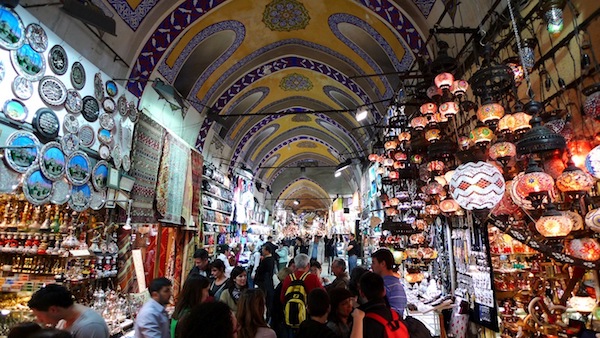
My one request was that she locate a merchant selling leather jackets.
We found, walking around Istanbul, that our Balkan features enabled us to blend in and seem like natives, and it was often only after a greeting in Turkish that an interlocutor realized we were foreigners, though not really foreign. So it was with my wife. A Turkish shopkeeper inquired where she was from and, upon hearing Serbia, he replied with a few phrases in Serbian, quickly adding that he had a friend from her country whose shop, just down the colonnade, sold leather jackets.
A text message arrived on my phone, just as a rather dry seminar was ending. My wife’s digital note asked me to take a taxi to the bazaar. Time to make my excuses . . .
Vilma met me near the appointed entrance, and walked me to the shop. A display area full of leather jackets beckoned, but the merchant met us at the door, greeting me both in Serbian and Greek. A big, burly fellow, he had the build of a Serbian whose features would pass for local in any nook or cranny in the Balkans. My wife had already set aside a few jackets for me to review, and we slowly settled on a dark brown specimen and then, of course, the negotiations began.
To be honest, the shopkeeper’s story was as interesting to me as his wares. Between jackets, I inquired as to his origins. He was an ethnic Turk from Yugoslavia, most specifically the Kosovo Province of Serbia. My wife had studied in Kosovo for a semester and the two of them exchanged some nostalgic memories of life in the SFRJ (the Serbian acronym for Socialist Federal Republic of Yugoslavia). He spoke a very functional Serbian and said that he emigrated to Turkey “after finishing with the JNA (Yugoslav Peoples’ Army).” I think he even had a tattoo of the army’s acronym in Cyrillic lettering: “ЈНА.” The borders between us all collapsed as these two former Yugoslavians, and one token Greek, sat down to tea.
Oh yes, the tea.
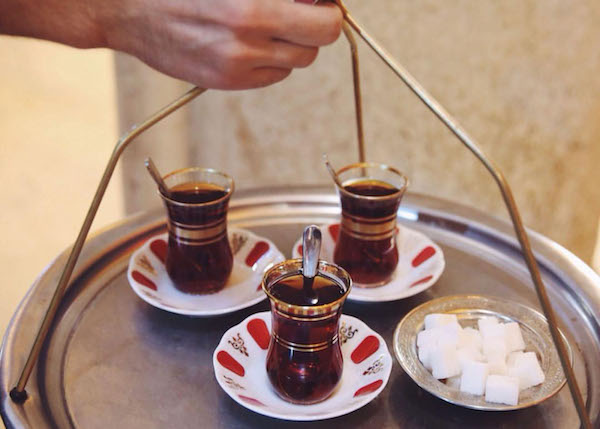
Turkish Tea. In glass cups. A delicious apple tea was served to us, ordered by our host from a nearby tea shop, as it became clearer that a deal would be consummated. Sipping, I said, searching for the phrase in Serbian, “How do you feel about 150 euro?” Clearly my offering price still provided him plenty of profit, though it was considerably lower than the price listed. Vilma mentioned that the shoulders did not fit exactly right, and a tailor was summoned who measured me and, leaving with the jacket, returned it after we finished our second cups of tea. When Vilma mentioned that she absolutely loved the flavor, the merchant summoned a teahouse employee, who brought her a box of loose tea.
The jacket fit perfectly over my blazer and, thereafter, it seldom came off, either on that trip or in Greece. Elegant enough to be used as an overcoat with a suit, I wore it constantly at the office. One of my colleagues in Athens, with the dry humor of the Greeks, inquired whether I took off the jacket when I slept . . .or showered.
When we packed up and moved from Athens to London, the jacket continued to provide rather jaunty counterpoint to my banker’s uniform of blue suit and tie. The British have a great tolerance and appreciation for the eccentric, from my former boss’s multicolored cufflinks coordinated with his ties and breast-pocket handkerchief, to this (Greek)-American’s penchant for Ottoman leather. It did mark me as different in an industry which (at that time) was both in great trouble and weeding out square pegs—such as my former boss and me.
In London, the only time my leather jacket was normative was at a party for one of my son’s schoolmate’s parents.
They were Bulgarian.
At the gathering, we were back in the Balkans, among our own. Here, the edges were rougher, the complexions darker, and the shaves less smooth. Here too, was an absence of cloth among the outerwear favored by the men. Absently, I picked up a jacket whose shape and color echoed mine, only to realize, on the stoop, that I was mistaken. Heading back up the steps, I encountered the jacket’s owner, whose possessive obsession towards his own coat was, obviously, similar to mine. My perplexed and innocent Balkan face convinced the agitated owner not to scrap the Greek-Bulgarian détente of the past few decades. Bottom line, you do not mess with a Balkan’s jacket.
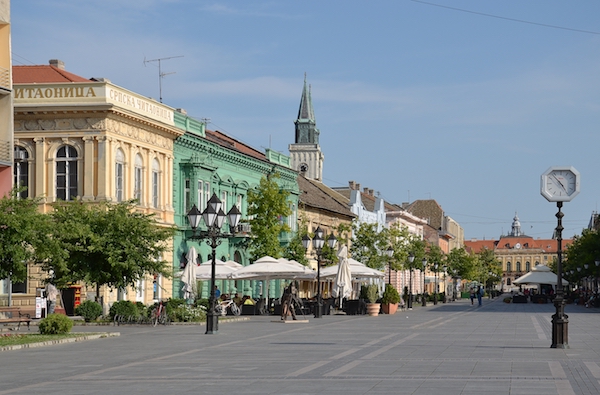
Eventually, in 2010, we returned to the Balkans, and our home in Serbia, after three years in London. The jacket was part of my go-to wardrobe, though constant use—combined with little or no maintenance—was beginning to take its toll. Serbia’s four seasons began to dry out the cowhide.
Sombor, Vilma’s home town, is a provincial city with a generally agreeable slow pace. The problem was—and is—that we had become accustomed to the pace of much bigger, faster cities.
In my case, I was walking fast to pick up my son from first grade, talking on my cell phone, when a stray rebar from a not-so-properly cordoned off remodeling site opened a large gash in my coat. Its final act was to protect its beloved owner.
The cut was too deep to heal but, still I could not throw the jacket out. It was relegated to a mothballed closet in our house in Sombor, where it no doubt remains.
I would manage to buy another leather jacket; once again, naturally, Turkish, when my best friend got me a cut-price ticket to accompany him and a large Greek tour to the city of Izmir, known to Greeks, and to history, as Smyrna. On an excursion outside Izmir, our guide took us to a large leather emporium where, once again, I negotiated a purchase, this time in Greek.
The store was owned by a member of that near-extinct minority of Asia Minor Greeks, and our guide, an ethnic Turk originally from the Greek island of Kos, took her Greek charges exclusively to this establishment. I allowed myself a budget of 300 euros, and spied a jacket costing 700. The shop assistant, a Gagauz, spoke broken Greek and English. Once again, though focused on the prize, my jacket, I was also excited to meet a member of this Orthodox Christian Turkish ethnicity, a smattering of whom also live in Bulgaria, Romania, Greece, Turkey, and Moldova.
I like to think that my knowledge of his people brought the price down under 300 euro. Yet, back on the bus, the purchasers compared prices and most 700-euro items were eventually purchased at figures in a similar range. Topping off the transaction, I saw the guide exchanging quick kisses with the Greek proprietor, then stuffing an envelope of bills in her purse.
My new jacket, purchased in 2011, has stood well the test of Sombor and Chicago winters and the rough commute on Chicago mass transit. I take better care of it, knowing that a trip to Turkey is no longer an hour’s flight away, and that Istanbul isn’t quite the hospitable yet complicated place we knew. In the gentler climate of South Carolina, I am confident that this jacket will be with me for a long time.
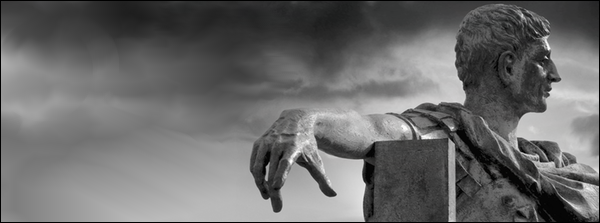

6 Comments
Will
a leather phelonion for your daily service! Delightful, Alexander.
Jean
This is marvelous, Alexander. Funny, perceptive, informative. Thank you.
Frankie Gillespie
Thank you, I find your enthusiasm on a topic or place infectious.
Alex
Thank you both. It is always a pleasure when you can combine shopping with history. That way the product always reminds you of the story.
Jean
Hey, Alexander – I have posted some comments on previous pieces, and, as is true of other notes to other writers, I failed tech 101, and they did not come through. This piece of yours, as is always true, combines the day to day with the long sweep of history in a way that is informative and entertaining. Like my cousin, Frankie Gillespie, (see above), I am a fan. Thanks.
Alex
And I am a fan of your, Jean. Thank you, it is nice to wear something that reminds you of so much . . . mileage.